Abstract
Crude culture filtrates of strains of Bacillus cereus, B. thuringiensis, and B. mycoides caused an increase in vascular permeability when injected intradermally into rabbits. The time course of the change in permeability was determined, and could easily be distinguished from a more transient effect induced by purified (from B. cereus) phospholipase C. The properties of the responsible factor were found to be similar to those reported for the guinea pig dermal factor and the ileal loop fluid inducing factor, namely: synthesis by vigorously aerated, logarithmically growing cells; inactivation by heating at 56 C; non-dialyzability; precipitation with ammonium sulfate; and antigenic characteristics. Permeability factor was not related to either the phospholipase C or the hemolysin produced by B. cereus. Activity of this B. cereus toxin, as measured in the vascular permeability and ileal loop assays, can easily be quantitated, but the greater simplicity, reliability, and economy of the vascular permeability test make it the method of choice for screening cultures or following toxin purification.
Full text
PDF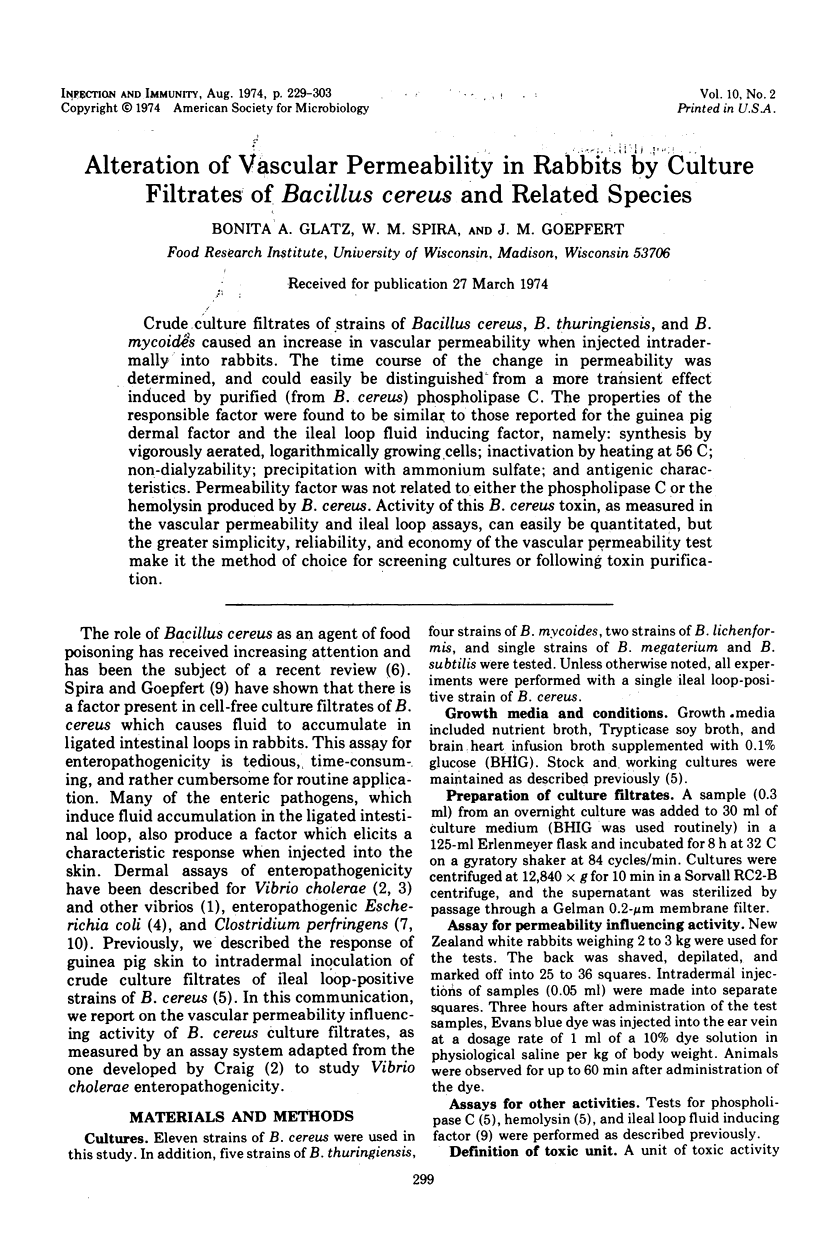
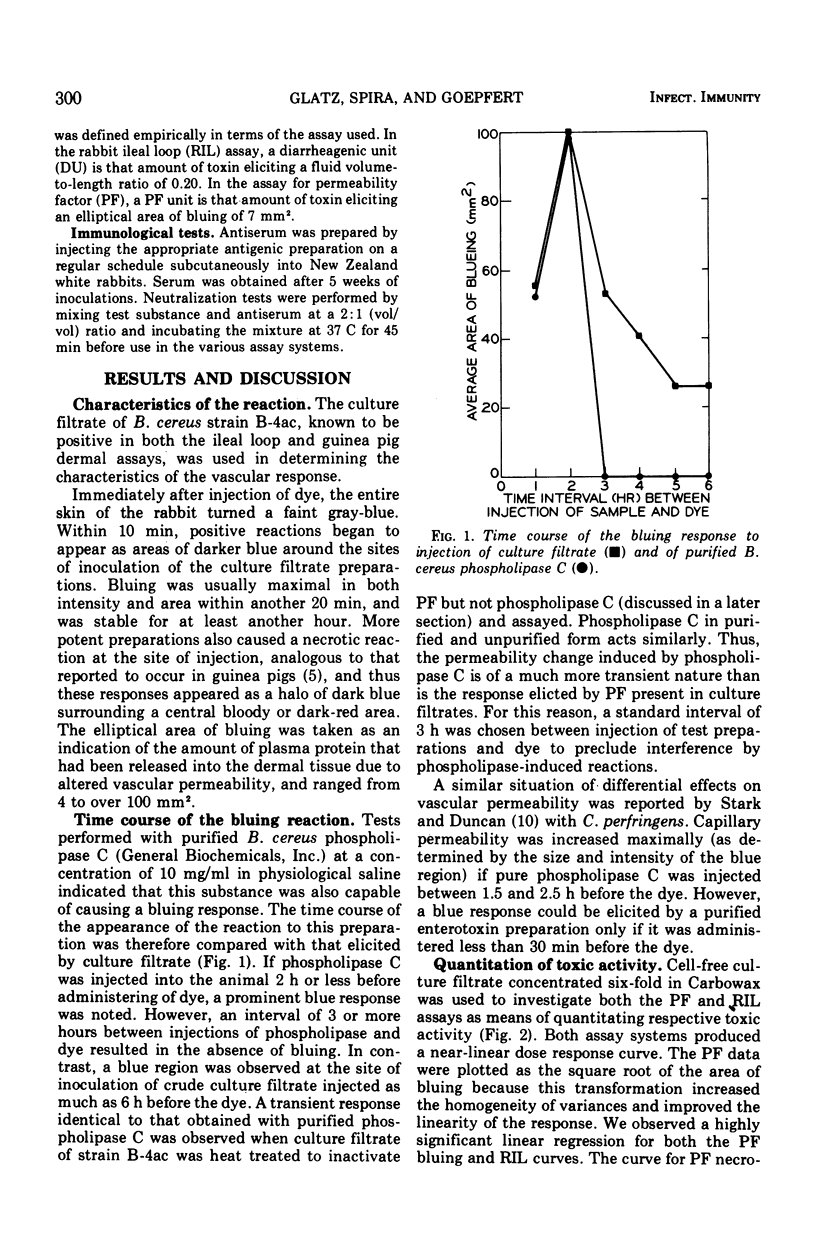
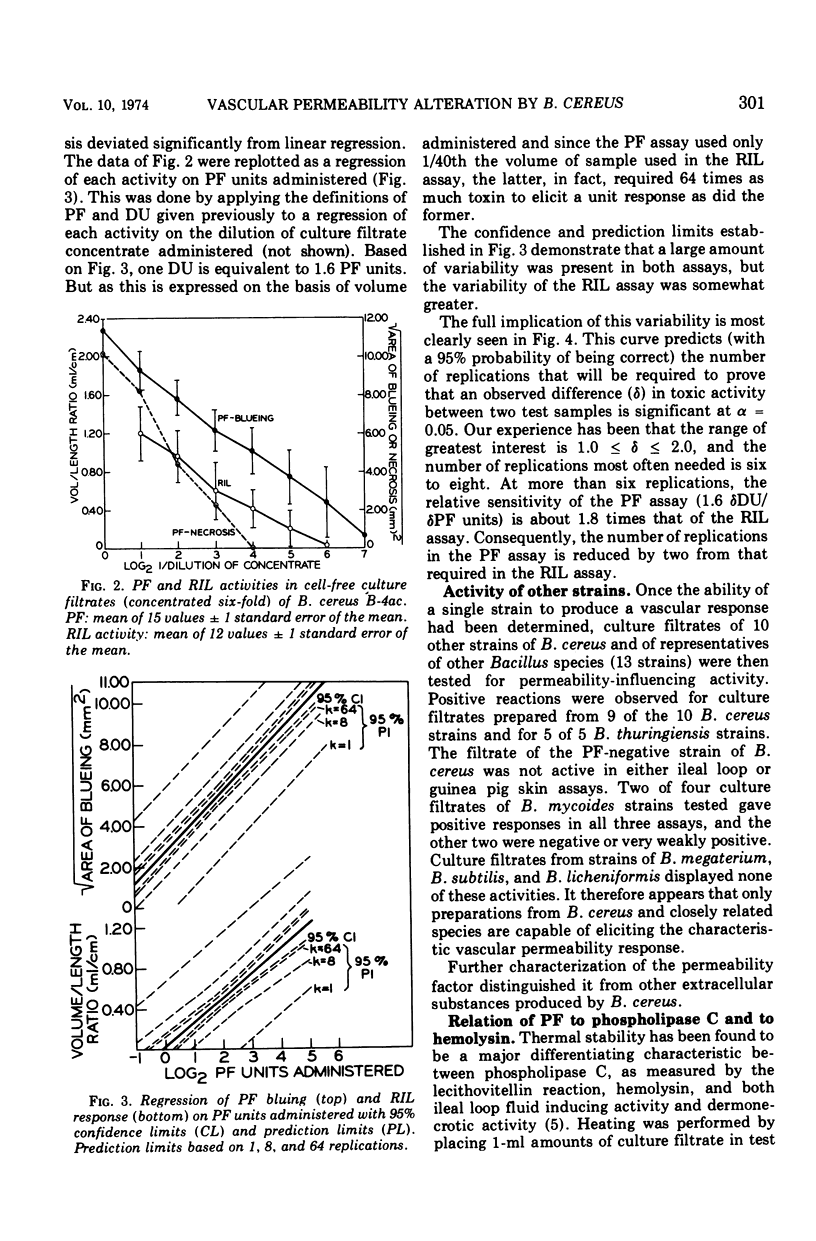
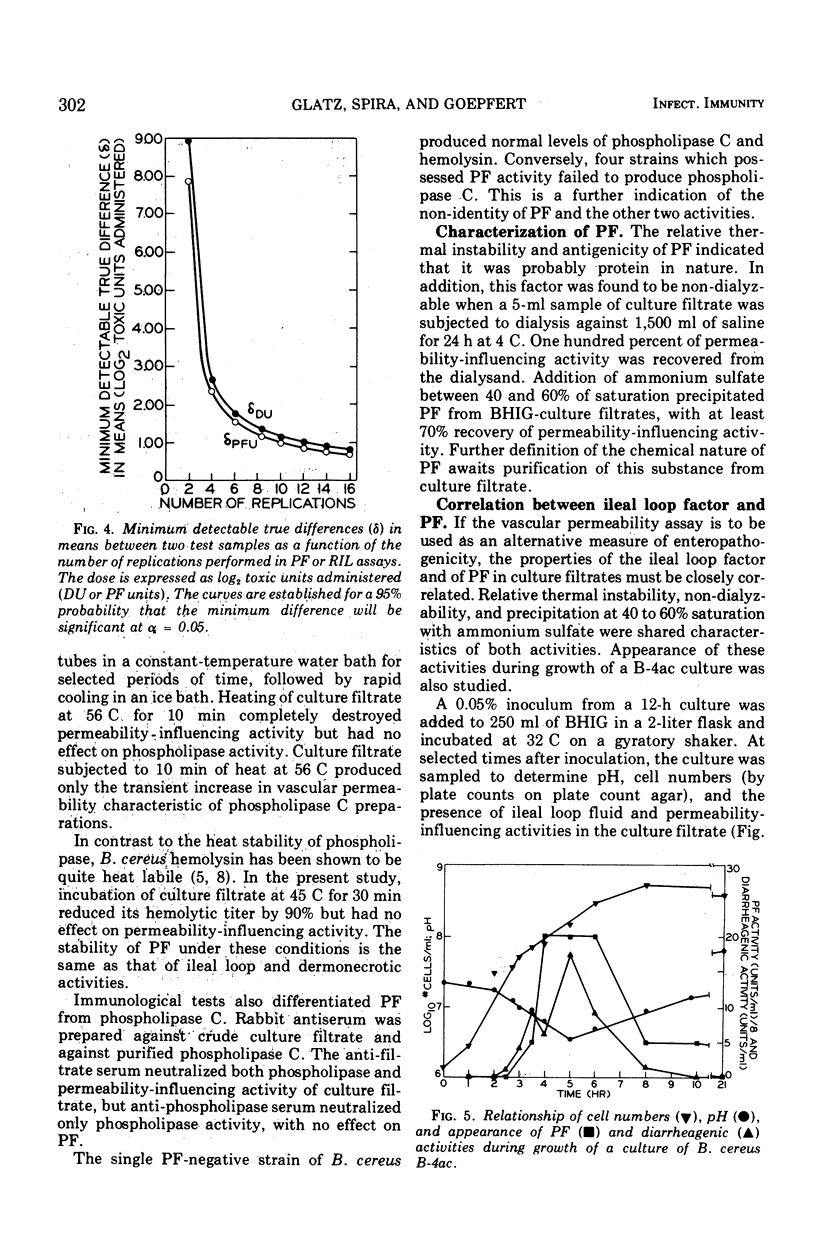
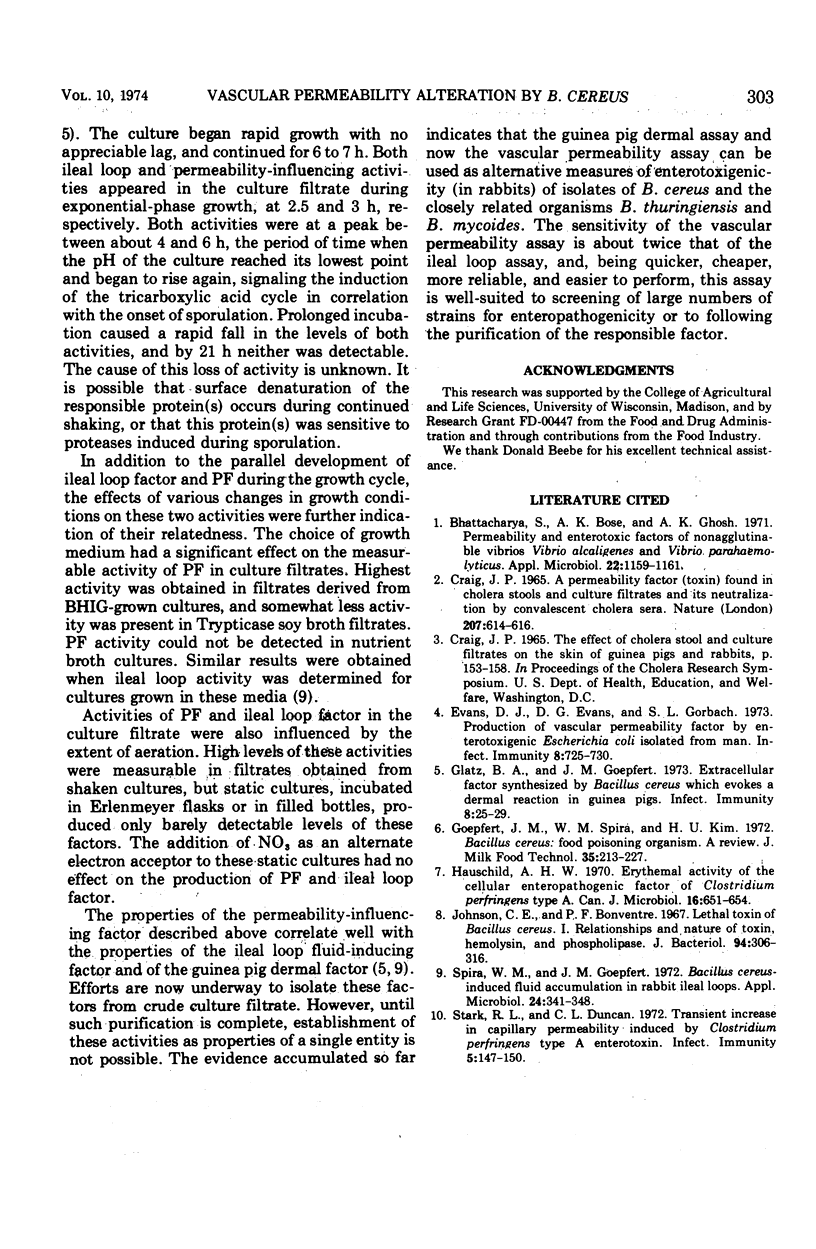
Selected References
These references are in PubMed. This may not be the complete list of references from this article.
- Bhattacharya S., Bose A. K., Ghosh A. K. Permeability and enterotoxic factors of nonagglutinable vibrios Vibrio alcaligenes and Vibrio parahaemolyticus. Appl Microbiol. 1971 Dec;22(6):1159–1161. doi: 10.1128/am.22.6.1159-1161.1971. [DOI] [PMC free article] [PubMed] [Google Scholar]
- Craig J. P. A permeability factor (toxin) found in cholera stools and culture filtrates and its neutralization by convalescent cholera sera. Nature. 1965 Aug 7;207(997):614–616. doi: 10.1038/207614a0. [DOI] [PubMed] [Google Scholar]
- Evans D. J., Jr, Evans D. G., Gorbach S. L. Production of vascular permeability factor by enterotoxigenic Escherichia coli isolated from man. Infect Immun. 1973 Nov;8(5):725–730. doi: 10.1128/iai.8.5.725-730.1973. [DOI] [PMC free article] [PubMed] [Google Scholar]
- Glatz B. A., Goeppert J. M. Extracellular factor synthesized by Bacillus cereus which evokes a dermal reaction in guinea pigs. Infect Immun. 1973 Jul;8(1):25–29. doi: 10.1128/iai.8.1.25-29.1973. [DOI] [PMC free article] [PubMed] [Google Scholar]
- Hauschild A. H. Erythemal activity of the cellular enteropathogenic factor of Clostridium perfringens type A. Can J Microbiol. 1970 Aug;16(8):651–654. doi: 10.1139/m70-112. [DOI] [PubMed] [Google Scholar]
- Johnson C. E., Bonventre P. F. Lethal toxin of Bacillus cereus. I. Relationships and nature of toxin, hemolysin, and phospholipase. J Bacteriol. 1967 Aug;94(2):306–316. doi: 10.1128/jb.94.2.306-316.1967. [DOI] [PMC free article] [PubMed] [Google Scholar]
- Spira W. M., Goepfert J. M. Bacillus cereus-induced fluid accumulation in rabbit ileal loops. Appl Microbiol. 1972 Sep;24(3):341–348. doi: 10.1128/am.24.3.341-348.1972. [DOI] [PMC free article] [PubMed] [Google Scholar]
- Stark R. L., Duncan C. L. Transient increase in capillary permeability induced by Clostridium perfringens type A enterotoxin. Infect Immun. 1972 Jan;5(1):147–150. doi: 10.1128/iai.5.1.147-150.1972. [DOI] [PMC free article] [PubMed] [Google Scholar]


